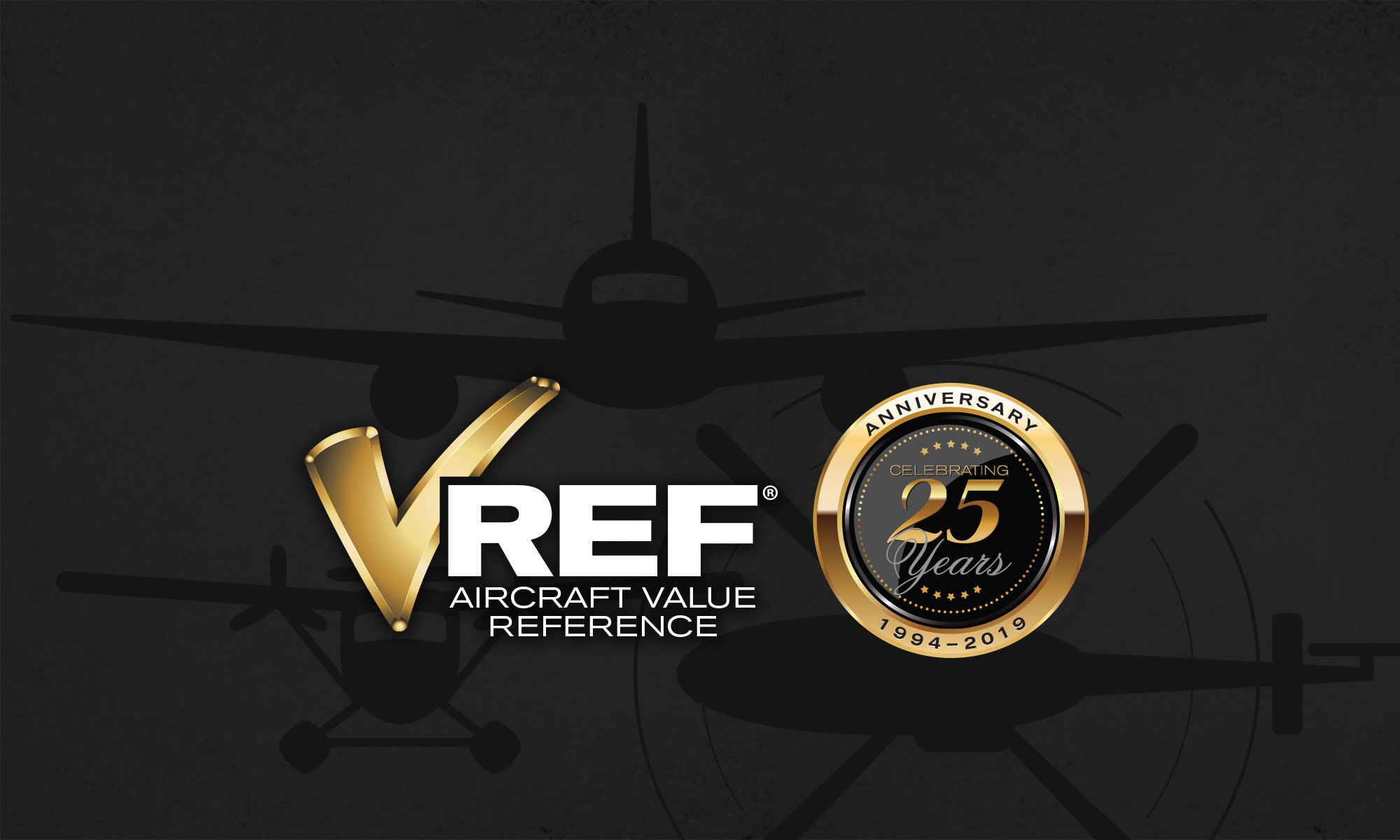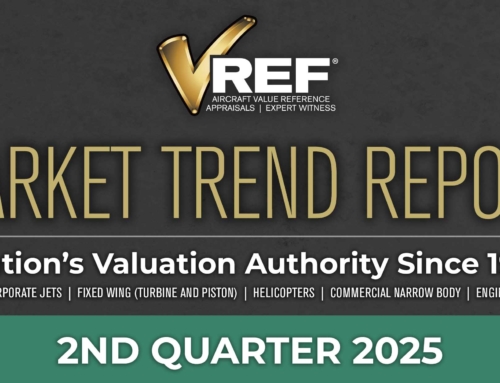It’s hard to comprehend we are half way through the year already. Time flies when you are having fun, or should we say passionate about your job. Its passion that drives VREF to be the best it can be every day. The staff at VREF (we are growing quicker than we can report, more on this subject later in the newsletter) eats and sleeps aviation. We are committed to the industry and more importantly we are committed to our mission of bringing transparency to a once cloudy market. In the coming months, many of you will be receiving an invitation to join our beta testing group and start putting the new VREF platform through its paces. It’s an incredibly exciting time as we are getting closer to pulling the wraps off what we hope will be the bench mark for many years to come. Don’t worry all you die hard VREFers, you will find the new platform just as easy to use and with so many more features and benefits you’ll be wondering how you ever survived with it.
Survival skills are the tools you have at your disposal to overcome obstacles. I spent the last 9 months with 40 other aviation professionals honing those skills as I completed my ASA (American Society of Appraisers) accreditation. In fact, three of us at VREF went through the new curriculum and program at Embry-Riddle Aeronautical University in Daytona Beach together. While I can’t say enough positives about the program, the things you won’t hear about that I want to share with you are the networking opportunities. Spending this much time with a small group of people that all have a common interest can only create lifelong relationships and connections. I found that I was not alone in my pursuit of knowledge.
To my surprise, few were actually there to become a practicing appraiser, so what is the draw to spend 4 weeks over the course of 9-months learning about appraising aircraft? The answer lies in the industry and how we are finally turning the corner and creating rules for ethical behavior and self-regulation. The ASA accreditation for many will provide enough understanding into the appraisal world that they can take this knowledge and apply to their career, either in terms of reviewing appraisals they are sent, or engaging with appraisers due to their job responsibilities. Being able to recognize a “good” appraisal from a “bad” one is more subjective then it appears. Being able to engage with a banker that knows appraisal methodology and understands what he/she is reviewing will produce better appraisers in the future.
Before jumping into the market and how 2019 has been shaping up I want to introduce our clients to the newest members of the VREF team. VREF is adding to the staff so we can provide more experts to assist with the ever-growing needs of our clients. In January, we welcomed Richard “Dick” Hart, ASA who is not only considered the foremost expert in helicopter appraisals, but one of the leading expert witnesses in helicopter litigation and an owner/operator of helicopters for over 5 decades. Dick can be found in the LA area, or on the ramp at Van Nuys airport. If you haven’t spoken to or met Dick, he will be attending EAA and NBAA and feel free to call him, he has over 10,000 movie production credits and chances are if you saw a helicopter on tv or in the movies as a kid, it was Dick or his father helping to create those memories. Dick can be reached at Dick@verf.com.
We welcomed Dr. Andreas Grassl to the team in March, like Dick, Andreas just completed his ASA Accreditation and he has spent the last 35 years as a practicing attorney in Vienna, Austria. Andreas is the first team member to be based outside the USA. Servicing our growing client base is one of top priorities and this is the first office outside North America we will be opening to better serve you. Andreas is available for appraisal work and expert witness consulting and he will be attending Ebace as well as EAA and NBAA. If you are in Europe and need proper guidance please make sure you reach out to Andreas. Andreas can be reached at Andreas@vref.com.
VREF also welcomed Eric Pupye to the management team. Eric has 22 years of security experience with a specialty in cyber security, airport and avionics security and he is an attorney. He has Top Secret Security Clearance as a specialist for The Department of Homeland Security and he was formerly a United States Air Force Branch Chief with the National Security Agency (NSA). Eric has completed pilot training at Embry Riddle Aeronautical University, and he is a decorated combat veteran. Eric will be focusing his efforts on litigation consulting in avionics, airport and cyber security which is a growing field and we are fortunate to have him on the team. Eric can be reached at Eric@vref.com.
Did you know VREF has an office in Australia? VREF welcomed Neil Schiller, ASA to the team in May. Neil has over 35 years of appraising experience with a specialty in valuations of fan, turbine, rotor, turbo and piston engines, aircraft, ground handling equipment and ground support equipment. Neil was formerly the Australian and New Zealand aviation portfolio manager for GECC, where he oversaw the largest aviation portfolio in the country. For all of our clients down under, Neil is available during your normal business hours to assist with all of your appraisal needs and he can be reached at Neil@vref.com.
VREF is not just an appraisal and software company, we are also a litigation consulting and expert witness company. We have one of the most impressive management teams in aviation, and we are the only expert witness company with specialties in everything from cyber security to back to back transaction disputes. If you are facing litigation that requires help, you should contact us at 844-303-VREF and let us demonstrate why we are the most trusted group in aviation.
VREF has just completed the 2019 residual value 15-year forecast and this will be made available through our current platform as a PDF until the new platform is released where it will be imbedded in our available pricing. Speaking of pricing, we wanted to share that we have updated all in production 2019 prices, and optional equipment lists. We have also added the following aircraft to the database:
- Beech 1900 C and D
- Quest Kodiak Series II
- Pacific Aerospace E-350 Expedition
- Dornier 228-200
- Airbus A320-200 Neo
- Airbus A320-200
- ATR 72-600
- ATR 42-500
- ATR 42-600
- Boeing 737-300 (updates)
- Boeing 737-400 (updates)
- Boeing 737-500 (updates)
- Boeing 737-600 (updates)
- Boeing 737-700 (updates)
- Boeing 737-800 (updates)
- Boeing 737-900
- Boeing 737-900ER (updates)
- BAE Jetstream J32
- Guimbal Cabri G2
- New Piper 100’s
- Daher TBM 940
2019 has certainly faced new challenges both in terms of politics and the economy. With growing concerns that the USA is heading into a recession or correction, and certain looming market pressure due to the tariff war in China, we at VREF have been pleasantly surprised to see how well aviation is performing as a sector. We recently wrapped up our annual manufacturer meetings and 2019 should be slightly better than 2018 in terms of new aircraft deliveries and we are forecasting a slightly lower transaction number for 2019 compared to 2018, mostly due to the lack of available inventory and the number of buyers looking for aircraft. We are hearing words like back-log or lack of availability across the board from all the Business Jet manufacturers.
If you are in the market for a light sport aircraft or trainer you know how tight inventory is and the proof is the strong residual values, which we are reporting now for 6thstraight quarter. Also, worth noting are the recent numbers regarding the ADS-B out deadline, which now stands at 70% total fleet compliance. Where will it cap out at? We are anticipating numerous 30+ year old aircraft will be removed from the market at the end of the year, and we should still see double digit percentage of the total fleet grounded due to lack of compliance.
Without any more delay following are the 2ndQuarter market updates by segment.
Piston Singles: Most values are stable with the exception of some single engine models increasing slightly in value. The high demand for Flight Training has had and will have an impact on value via supply and demand.
The GA aircraft manufacturing industry increased unit deliveries in 2018 compared to the prior year. The billings increased slightly to approximately $24.2 billion. Piston airplane deliveries increased by 5.0 percent to 1,139 units. Manufacturers shipped 601 turboprop airplanes, an increase of 5.2 percent (*) for the same reporting companies. The business jet industry, driven by recent product introductions, improved from 677 units in 2017 to 703 units in 2018, a 3.8 percent increase. Piston airplane shipments to North American customers accounted for 61.5 percent of overall deliveries. The Asia Pacific region was the second largest market for piston airplane deliveries for the fourth year in a row at 18.5 percent of deliveries. 49.8 percent of turboprop of deliveries. 49.8 percent of turboprop airplanes went to customers in North America in 2018. The second largest market for turboprops was Asia-Pacific at 15.1 percent, followed by Latin America at 14.9 percent. At 65.1 percent, North America accounted for the largest share of the business jet market in 2018. There were 281 piston rotorcraft deliveries in 2018 compared to 264 in the prior year. Preliminary turbine rotorcraft delivery data shows a 5.0 percent increase to 695 shipments.
Piston Twins: Stable values on most models with some upward trends on Flight Training utilized models (i.e. Piper Seminoles/Diamond Twin Stars. These light twins are almost impossible to purchase. This market segment will be affected by this Flight Training demand for years to come!
Turbo Props: Caravans are still selling and holding value and less than 20 confirmed aircraft are for sale which is just about 1% of the fleet. The King Air 350i has also benefited from a hot market, and there are less than 4% available or 14 aircraft for sale on the pre-owned market. What turbo prop market update is complete without the daring child of aviation the PC12? NG’s are in high demand, and with a market time under 6 months they don’t stick around long.
Business Jets: It is still a North American dominated market, and we did see overall transactions slide almost 10% in 2018 compared to 2017. We expect that trend to continue as almost 50% of the current pre-owned market will continue to drag down overall value averages simply due to lack of interest from buyers. High Net Worth Individuals continue to dominate the market share of buyers in the USA, and most buyers indicate that young, newer aircraft with the latest technology are far more interesting than “deals” on older classic aircraft. As technology continues to drive purchasing decisions and older aircraft face the scrap yard, we are surly going to see the available for sale fleet percentage drop. The activity levels have not changed much and for the first time in years we see a very balanced market. It appears the only sector having stomach pains about the lack of pre-owned aircraft are the brokers and dealers looking to utilize credit facilities and purchase inventory.CL 300’s, 605’s, Legacy 600’s, 2000LXS’s is below 6% availability on the pre-owned market, Phenom 300’s CL 350’s, G550’s availability is below 4%. Softer markets include just about every model older than 20 years of age. Hawker 800’s are hovering at 13% of the total fleet being for sale, 850XP’s are even worse at 18% and older Citations are just under 12%. Exceptions to the rule are aircraft with recent total refurbishment, 2020 compliance and strong pedigree aircraft. Sales declines are based on lack of available aircraft to choose from, buyers continue to report dissatisfaction with lack of availability. This is a positive sign as the market appears relatively balanced at the moment despite all the economic chatter.
Commercial Aircraft: Boeing has monopolized the news recently, and with recent crashes, fleet groundings of the Max aircraft and potential uncertainty as to when they will fly again it is no wonder that Boeing stock took a major hit. The total loss in market value has exceeded 26 Billion and there is almost a guarantee of order delays and cancelations. On the flip side, things continue to improve at Airbus, with a staggering back log of almost a decade. It is apparent the clean sheet approach has garnished the attention of numerous airlines looking to add A350’s to their fleet. If you have flown on one, the windows in the cabin combined with the sound proofing in the interior creates an amazing ride.
Helicopter: The big news in recent helicopter happenings is the bankruptcy filings of PHI and Bristow, 2 of the world’s premier helicopter operators (following the also recent filings of CHC, Erickson and Waypoint Leasing). While both operators have stated that they will continue normal operations, the reality of bankruptcy is that they will likely have to terminate the marginal and poorly performing contracts. As a result, we should see a bunch of aircraft being put on the market in a relatively short time frame. Both PHI and Bristow operate large fleets of medium and large helicopters, which happen to be the poorest performing segment of the helicopter sale/resale industry. Adding more aircraft to the pre-owned market will exacerbate the situation inexorably bringing sales prices down even further. Witnessing several similar financial situations over the last 45 years, we find that past descriptions used by helicopter journalists and reporters regarding these large companies as “embarking on aggressive expansion” or some similar language always connotes to the reader that this is a good thing, our experience is the opposite. Historically companies that pursue this type of rapid growth are expanding due to a “must grow or die” mentality with the newer contracts subsidizing the older ones.
On a more positive note, the light helicopter market, although still rife with some uncertainty, appears to be stabilizing and even showing some increased pre-owned sales activity. VREF statistics show an increase in this segment’s values over the last 2 quarters and we expect that trend to continue its slow rise at least into the next quarter or 2.
UAV: The Federal Aviation Administration (FAA) latest aerospace forecast highlights what it calls the “phenomenal growth” of the small unmanned aircraft systems industry.
According to the forecast report for fiscal years 2019-2039, there were more than 277,000 non-model unmanned aircraft registered with the FAA at the end of 2018, representing a bigger growth rate than the agency had anticipated. With a forecast of 158,900 made by the FAA a year prior, it fell short by a substantial 80%. The FAA predicts that the U.S.’ non-model UAV fleet will total more than 835,000 in 2023.
In other big news, UAV delivery company Wing, a subsidiary of Google parent company Alphabet Inc., has received Air Carrier Certification from the Federal Aviation Administration (FAA), enabling the company to begin commercial service delivering goods to homes via drone. Wing drones have flown over 70,000 test flights and more than 3,000 deliveries to doorsteps, driveways and backyards of customers in Australia (the test region). The program will be expanding to Virginia where trial deliveries will start this year.
EUROPE: There has been a lot of activity in Europe, however the business jet market faces many challenges. The main problem is the limited capacity of the airspace system and a lack of airport slots. The airlines grew at the expense of the other sectors of aviation and although everybody is talking about over-capacity, airlines continue to open new routes (thus competing with business aviation on 2ndand 3rdtier routes) and adding new aircraft to their fleet.
Operating a business jet becomes increasingly challenging, as you have to apply for airport slots (and sometimes parking slots) which may not be available at peak times or you are kept on the ground as ATC restricts the traffic flow due to a lack in staff.
However, we see increased demand in charters and some upgrades to larger aircraft, but those replaced are usually exported to the USA or Latin America. So, buyers looking for opportunities should have a look at European aircraft, they are usually well maintained and professionally operated (in this respect the strict oversight by EASA pays off).
We see the balance of the year playing out in much the same fashion as the first half has and look forward to reconnecting with friends, and clients at EAA and NBAA.
As always if we can ever do something better please let us know, and if you are happy, we wouldn’t mind you sharing that either.
Sincerely,
Jason Zilberbrand






